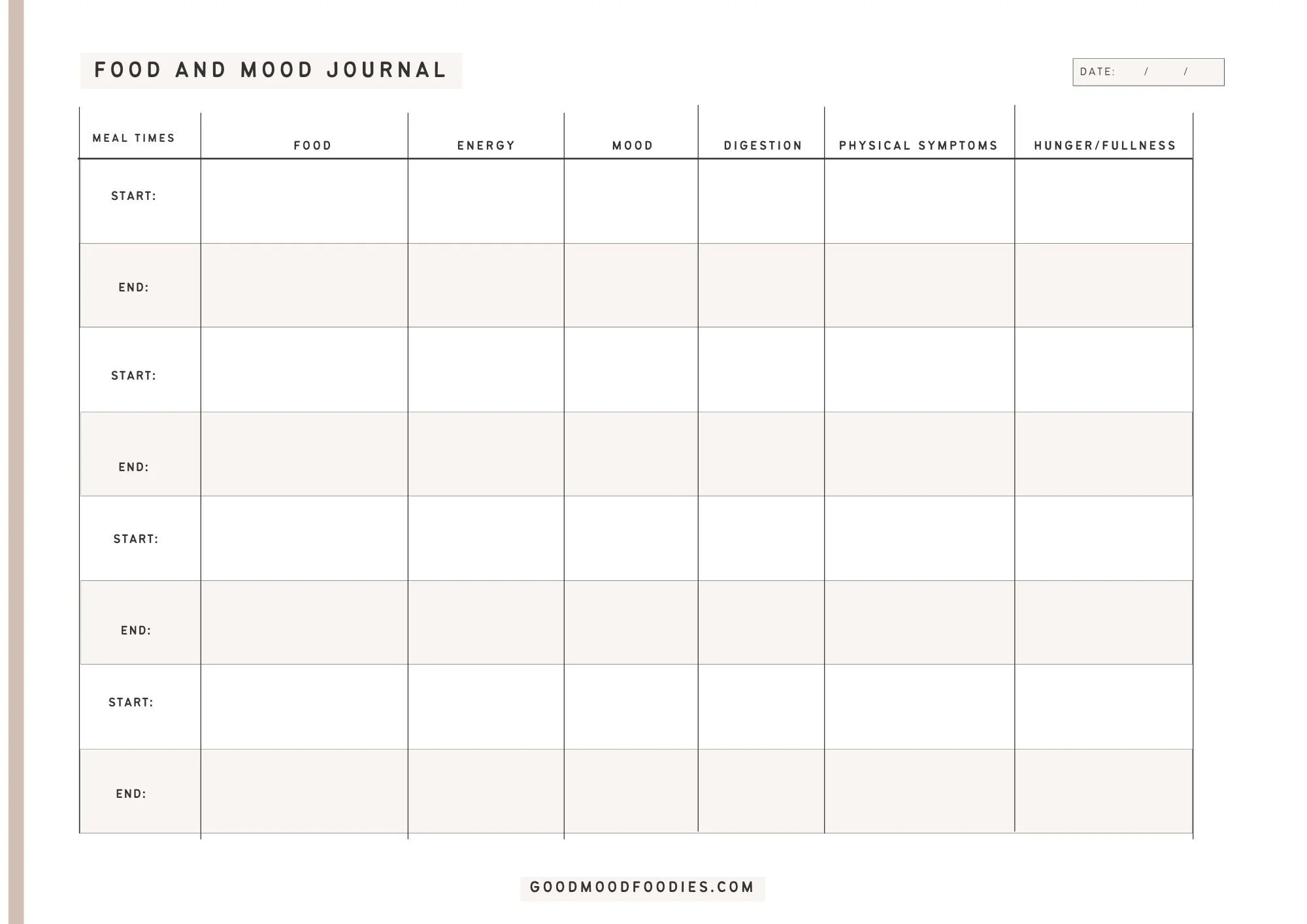What is a Food & Mood Journal? How Tracking What You Eat Can Improve How You Feel
By Carly Waldman, MS, RD
Have you ever noticed how certain meals leave you energized and content while others leave you feeling sluggish or irritable? What we eat has a profound impact not only on our physical health but also on our mood, energy levels, and mental clarity. As a dietitian, I often encourage clients to use a Food & Mood Journal to better understand the connection between what they eat and how they feel.
A Food & Mood Journal isn’t about calorie counting or strict food tracking—it’s about discovering patterns that can help you nourish your body and your mind. Let’s dive into how it works and why it might be your next favorite wellness tool.
What is a Food & Mood Journal?
A Food & Mood Journal is a simple log where you track:
What you eat and drink throughout the day (meals, snacks, beverages).
When you eat (time of day).
How you feel before and after eating (mood, energy levels, digestion, and even cravings).
The goal is to help you connect the dots between your food choices and how they impact your mood, energy, and overall well-being. For example:
Do you feel energized after a balanced lunch of protein, healthy fats, and complex carbs?
Does skipping breakfast leave you cranky or unfocused?
Are there specific foods that leave you bloated, foggy, or even anxious?
With consistent tracking, patterns often emerge, empowering you to make food choices that truly serve you.
Why is Food Connected to Mood?
There’s science behind this connection. The foods we eat can influence neurotransmitters, blood sugar levels, inflammation, and gut health—all of which play a role in how we feel. For example:
Balanced meals (including protein, fiber, and healthy fats) can stabilize blood sugar levels, leading to steady energy and a balanced mood.
Highly processed or sugary foods may cause blood sugar spikes and crashes, leaving you irritable or fatigued.
Nutrient-rich foods like omega-3 fatty acids, whole grains, and leafy greens can support brain health and reduce inflammation, which is linked to better mental well-being.
By keeping track of your meals and feelings, you can pinpoint which foods support you emotionally and which might be dragging you down.
How to Start Your Own Food & Mood Journal
Here’s a simple framework to help you get started:
Log your meals and snacks Write down what you ate, including drinks, and note the time.
Record your mood and energy levels How did you feel before eating? How did you feel 30 minutes to an hour after eating?
Were you energized, sluggish, satisfied, or still hungry?
Did your mood shift—for better or worse?
Note digestion or physical symptoms Pay attention to bloating, heartburn, headaches, or other signs of discomfort.
Reflect on your day At the end of the day or week, look for patterns. For example:
Do certain foods or skipping meals affect your mood?
Are you relying on caffeine or sugar for energy boosts?
What foods help you feel your best?
Benefits of a Food & Mood Journal
Increased Awareness: It encourages mindfulness and helps you tune into your body’s signals.
Identifying Triggers: Discover foods that may contribute to fatigue, brain fog, or mood swings.
Improved Energy: Recognize which meals or snacks give you long-lasting energy.
Emotional Support: Understand emotional eating patterns or stress-driven cravings.
Personalized Nutrition: Find foods that fuel you both physically and emotionally.
The best part? You don’t need to track forever. Even just a week or two of consistent journaling can provide meaningful insights.
Final Thoughts
Food is so much more than fuel—it’s a source of nourishment for your body, mind, and emotions. A Food & Mood Journal is a practical tool that can help you better understand your body’s unique needs and how to feel your best.
If you’ve been struggling with energy crashes, mood swings, or digestive discomfort, give journaling a try. You might just uncover simple changes that can make a big difference.
Want to explore this further with personalized guidance? I’m here to help you create a plan that works for you. Let’s work together to find foods that support your mood, energy, and overall health!
Attached below is my favorite sample, available as a free online download, to inspire you to create your own or to guide you in the layout.

